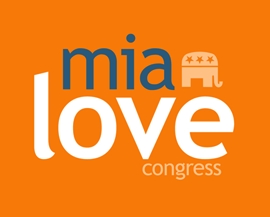Posted 03/29/2011 06:26 PM ET
Community Reinvestment Act: Separating Fact From Fiction – IBD – Investors.com.
The Greenlining Institute is typical. The Berkeley, Calif.-based community organizer fired off a letter to us complaining about our March 21 editorial “WaMu: Guilty Only Of CRA Compliance.”
In it, we argued that Washington Mutual, a CRA poster boy in the run-up to the crisis, is now a convenient whipping boy for the same regulators who pressured the bank into making the “reckless” multicultural loans they’re suing it over today.
“IBD’s continued insistence that the Community Reinvestment Act was responsible for the subprime mortgage meltdown has been refuted by virtually every reputable authority in the field,” wrote Greenlining spokesman Bruce Mirken. “That includes nine of 10 members of the Financial Crisis Inquiry Commission, including three out of four Republican appointees.”
The Greenlining official added: “While some cling dearly to the myth that the CRA was the culprit, simply repeating a statement endlessly does not make it true.”
Greenlining’s pique is understandable. It helped fuel the subprime crisis by using the CRA to leverage large banks like WaMu for record loan set-asides for uncreditworthy minorities. Then it extorted even more money when the banks announced merger plans, filing protests with federal regulators to delay their bids.
Greenlining even got a sweetheart WaMu mortgage for its own headquarters, according to the new book “The Great American Bank Robbery.”
Now that the risky CRA loans that Greenlining pushed have led to record foreclosures, renewed inner-city blight and a widening of the racial “mortgage gap,” Greenlining is lobbying Democrats to broaden the CRA’s powers to close the mortgage gap and the “growing racial wealth gap.”
In testimony last year, its executive director proposed subjecting all of corporate America to anti-discrimination regulation, not just banks.
Greenlining also worked behind the scenes with the Democrat-led Financial Crisis Inquiry Commission, or FCIC, which misled the public by whitewashing the CRA’s role in the crisis. The dishonesty in its final report, now in bookstores, is breathtaking — from its twisting and censoring of key facts to its shameless revising of history.
In light of the Obama administration’s stated goal of expanding the CRA, separating fact from fiction regarding this issue is of towering importance — to set the historic record straight and to prevent another financial calamity.
FICTION: Because the CRA was passed in 1977, long before the subprime crisis, it couldn’t have caused the recent explosion in bad loans.
FACT: The toothless 1977 regulations fully expired in July 1997, when President Clinton rewrote them to toughen CRA enforcement as part of a crusade to close the “mortgage gap” between blacks and whites.
For the first time, banks were required to show results. One of the five performance criteria in the “lending test” — the most heavily weighted component of the CRA exam — was adopting “flexible lending practices” to address the credit needs of poor borrowers in “predominantly minority neighborhoods.” Banks that didn’t bend their underwriting rules risked flunking the exam.
Ex-Federal Reserve Board Gov. Lawrence Lindsey, a staunch CRA defender, acknowledges that the changes “did contribute to a downgrading of credit standards.”
Under Clinton’s CRA “investment test,” moreover, banks for the first time earned CRA credit for purchasing subprime securities. A wave of these securitizations in the secondary mortgage market and on Wall Street began in 1997, which also happened to mark the start of the housing bubble.
Other changes transformed the once-dormant act into a weapon in the hands of Acorn, Greenlining and other shakedown groups who were quick to brand banks with prudent lending requirements as “racist.”
Clinton empowered the groups by making their public comments about bank lending in urban areas a key part of CRA evaluations and giving CRA credit to banks that provided them grants and other payola.
FICTION: ”Many of these (CRA) loans were not very risky,” the FCIC report claims.
FACT: Studies show that CRA loans have higher delinquencies and defaults and act as a major drag on bank earnings. In 2008, CRA loans accounted for just 7% of Bank of America’s total mortgage lending, but 29% of its losses on home loans. Also, banks with the highest CRA ratings tend to have the lowest safety and soundness ratings.
FICTION: Only 6% of subprime loans were originated by banks subject to the CRA, so the vast majority of risky lending was not tied to the law.
FACT: Among other things, the figure does not count the trillions of dollars in CRA “commitments” that WaMu, BofA, JPMorgan Chase, Citibank, Wells Fargo and other large banks pledged to radical inner-city groups like Acorn, Greenlining and Neighborhood Assistance Corp. of America (NACA) after they used the public comment process to protest bank merger applications on CRA grounds.
The CRA requires the Federal Reserve to consider the CRA performance of the bank seeking such approvals. It’s the law’s chief enforcement mechanism. And community organizers exploited it to a fare-thee-well.
All told, they shook down banks for $4.6 trillion in such commitments before the crisis, boasts a report by the National Community Reinvestment Coalition, or NCRC, the nation’s top CRA lobbyist (which conveniently removed the report from its website during the FCIC hearings).
FICTION: The Fed “never considered pledges to community groups in evaluating mergers and acquisitions,” the FCIC report claimed, failing again to tell the full story.
FACT: The Fed based its decisions in large part on input from CRA advocacy groups, who gave a thumbs up or down to the proposed mergers depending on how much the banks pledged in new urban lending. So these pledges were a form of ransom that banks paid to groups holding their expansion plans hostage.
“Banks had the impression that they could not obtain regulatory approval of a merger or acquisition unless they made all the advocates ‘go away happy,’” said former JP Morgan Chase officer Mark Willis, as quoted in “The Great American Bank Robbery.”
Don’t take his word for it. Listen to Washington’s top CRA lobbyist tell it.
“The federal agencies are required to consider public comments in issuing CRA ratings and rendering decisions on merger applications. Comments on a bank’s CRA record often bolster the bank’s performance,” NCRC President John Taylor said in 2007. “CRA agreements are often negotiated between banks and community groups during the merger application process.”
FICTION: ”These commitments were generally promises by financial institutions to lend,” claimed FCIC Chairman Phil Angelides, and they weren’t necessarily fulfilled.
FACT: The NCRC said banks followed up on their commitments. A study by the Brookings Institution concluded that they “consistently” met their targets.
The University of Connecticut tracked $1 trillion in loan commitments pledged since 1993 and found that by 2000 the banks had made well over $600 billion of the loans.
FICTION: “These loans performed well,” the FCIC report maintained.
FACT: Brookings found that the loan commitments were set aside for low-income minorities with “marginal credit scores” and posed a higher risk. They were even riskier than regular CRA loans, because the banks delegated underwriting authority to the nonprofit shakedown groups, which had no experience judging credit risk.
NACA thinks traditional underwriting standards are “patronizing and racist.” It advertises that anyone — “regardless of how bad your credit is” — can qualify for the mortgages it’s arranged through special deals with banks. Not surprisingly, one study found that its delinquency rates were eight times higher than the national average.
Banks reported delinquency rates ranging from 5% to 50% on loans made pursuant to their merger-related commitments.
Yet the FCIC refused to investigate the more than 300 CRA agreements that banks and community organizers entered into before the subprime bubble burst.
Despite repeated requests by Commissioner Peter Wallison, the panel never examined the performance of the trillions in loan commitments.
“Commission management constrained the staff in their investigation into CRA by limiting the number of document requests and interviews and by preventing staff from following up with the institutions,” said Wallison, a former Reagan Treasury official.
Without seriously looking into the issue, the FCIC published a report absolving the CRA of any blame for the financial crisis.
Why would Chairman Angelides steer blame away from the CRA? Because he’s a big fan of the CRA. And as California state treasurer, from 1999 to 2007, he steered billions in state funds into unsafe CRA mortgages securitized by Freddie Mac.
At the time, Greenlining advised Angelides on where to invest California state funds, even providing him with its own CRA report card on “good” and “bad” banks. He has also personally benefited from CRA projects brokered by his real estate development firms, according to “The Great American Bank Robbery.”
As part of the CRA racket, Angelides should have been a witness in the crisis investigation, not its chief inquisitor. With the cover-up complete, he now hopes that CRA critics will go away.
“The debate about the role of the CRA should now be over as evidence presented in the commission’s report is clear,” Angelides declared earlier this month.





